Alaska
The forgotten Alaska connection to Seattle’s groundbreaking 3.7 million visitor World’s Fair
Published
1 minute agoon
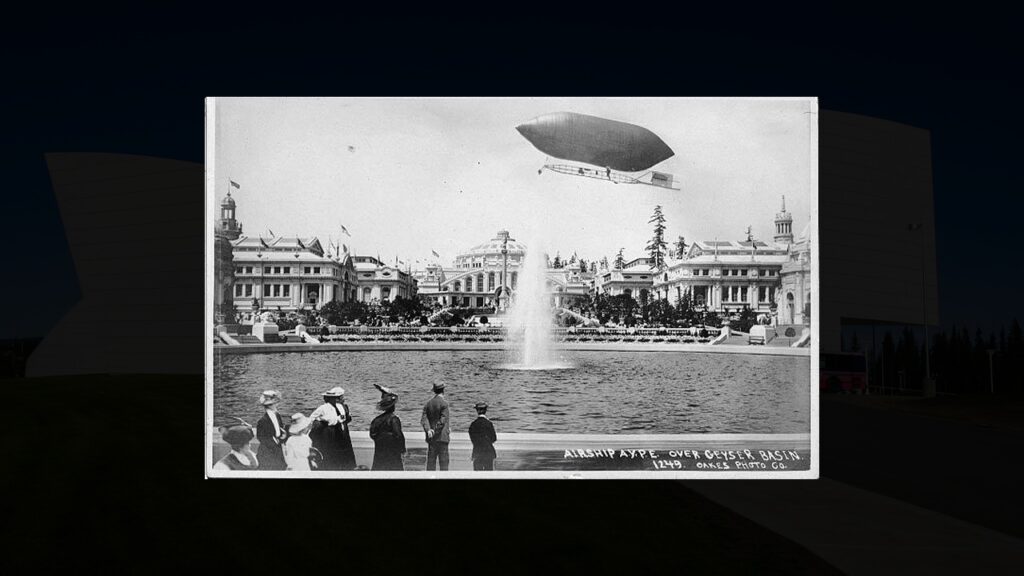
Seattle’s Profitable 1909 World’s Fair at University Campus
Seattle made history in 1909 when it hosted the Alaska-Yukon-Pacific Exposition on the University of Washington campus. The fair cost $10 million and took four years to plan, but the wait paid off.
More than 80,000 folks showed up on opening day alone. By the time it closed that October, over 3.7 million visitors had come through the gates, making it the first World’s Fair ever to turn a profit.
The event beat Portland’s rival fair by 700,000 visitors and left behind lasting landmarks like Rainier Vista and Drumheller Fountain that still shape the campus today.
The grounds where this historic fair once stood now tell the story of how Seattle grew from gold rush town to major city.
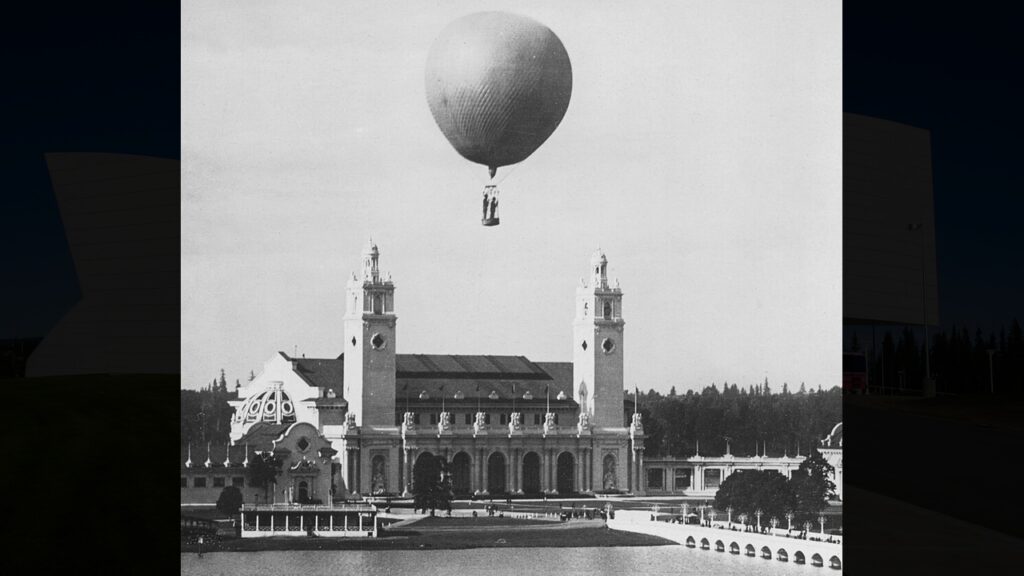
Gold Rush Fortune Launched Seattle’s Ambitious Fair
When Alaskan gold hit Seattle in 1897, the small town grabbed its chance. Seattle quickly became the go-to spot for miners buying supplies before heading north.
Godfrey Chealander of the Arctic Brotherhood got the fair idea after working on Alaska’s exhibit at Portland’s 1905 Lewis and Clark Exposition. James Wood pushed to make it bigger than Portland’s event.
Seattle’s leaders saw a perfect way to show off their growing city as the doorway to Alaska and the Pacific.
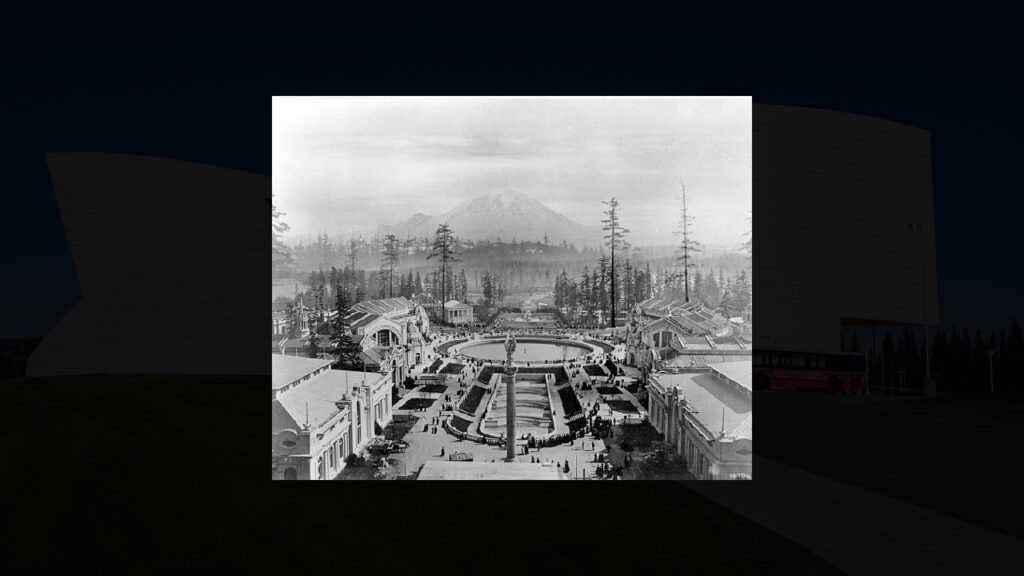
Smart Timing Saved Seattle’s Big Show
Seattle first wanted to hold the fair in 1907 to mark ten years since the Alaska Gold Rush. They changed plans after learning about the Jamestown Exposition that same year.
This lucky move saved them from trouble since 1907 turned out to be a bad year for the economy. The Seattle Chamber of Commerce later added “Pacific” to the name to highlight Asian trade.
They formed the Alaska-Yukon Exposition Corporation on May 8, 1906, and by May 31, added “Pacific” to create the final name.
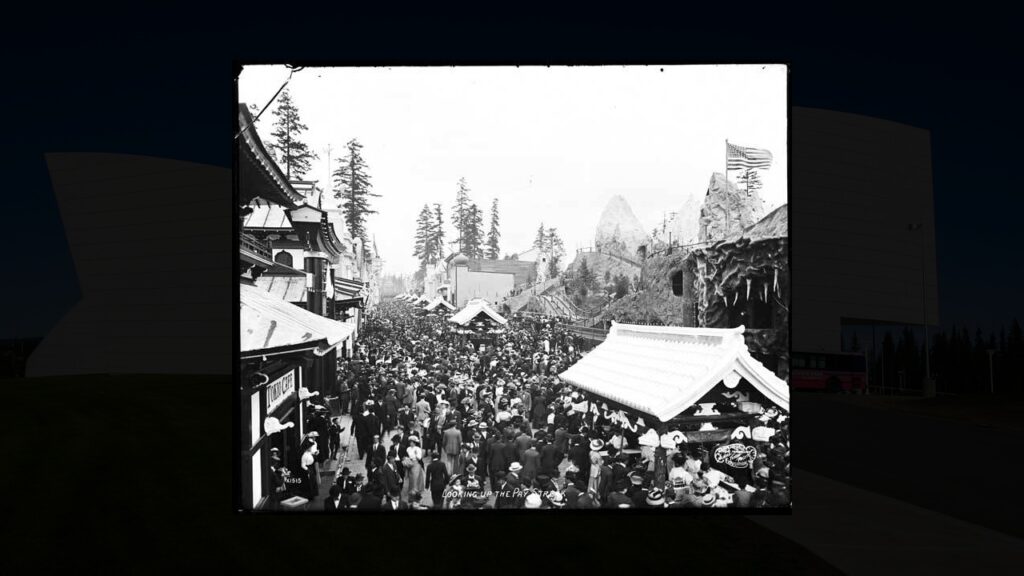
Campus Forest Became Perfect Fair Grounds
Edmond Meany pushed for using the University of Washington campus, though many thought it was too far from downtown. In 1905, the campus had just three buildings among thick forest.
Meany convinced others that the natural setting would draw visitors looking for something different. State lawmakers backed the plan but required at least four permanent buildings.
This team-up with the university meant the fair’s buildings would serve students for many years to come.
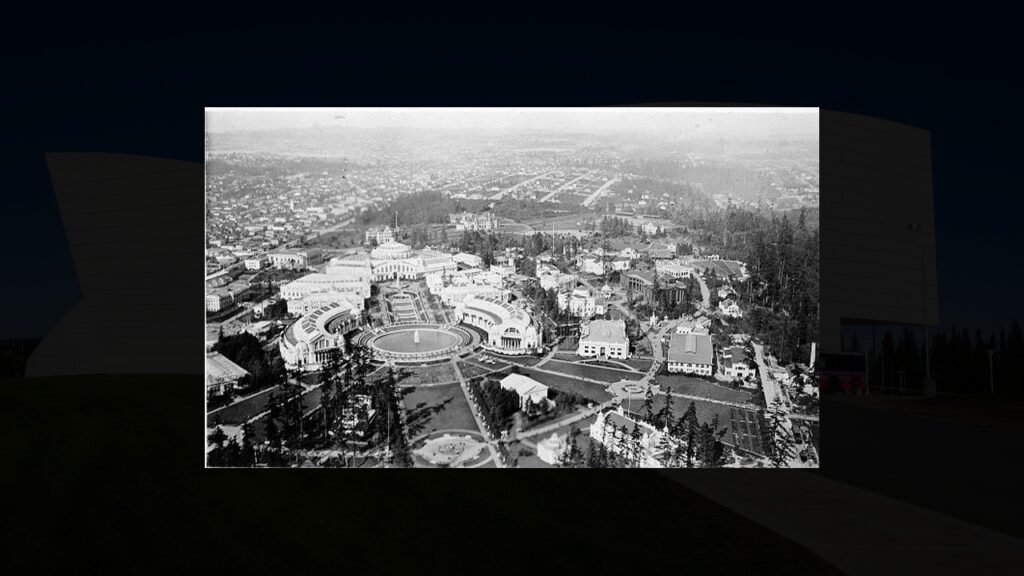
Money Poured In From All Corners
King County gave $300,000 to build the Forestry Building, which became the biggest log cabin ever built. They added another $78,000 for other exhibits.
The entire 1909 Alaska-Yukon-Pacific Exposition cost nearly $10 million and took four years to plan and build. The money came from state funds, county money, and private investors who believed in the project.
Seattle newspapers put aside their fights and worked together to promote the fair.
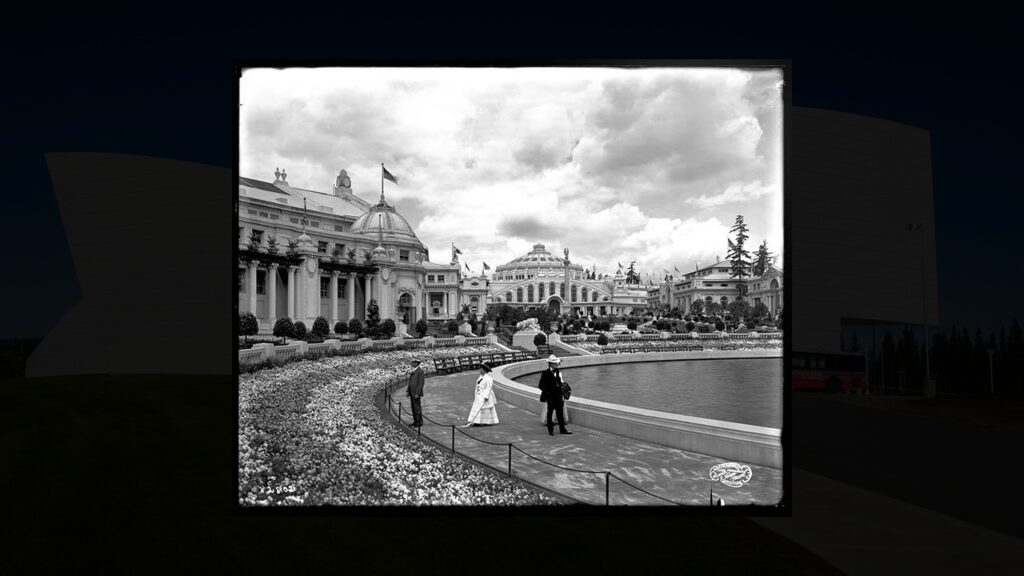
Famous Designers Created A Natural Masterpiece
The fair hired the Olmsted Brothers from Brookline, Massachusetts to design the grounds. John Olmsted visited in October 1906 and noticed Mount Rainier standing tall to the southeast.
He made the mountain the main focus of the fair layout.
Unlike other world’s fairs, he used natural views like Mount Rainier, Lake Washington, and Lake Union as key features. He placed buildings, roads, and paths to show off these views.
This main path later became the University’s Rainier Vista.
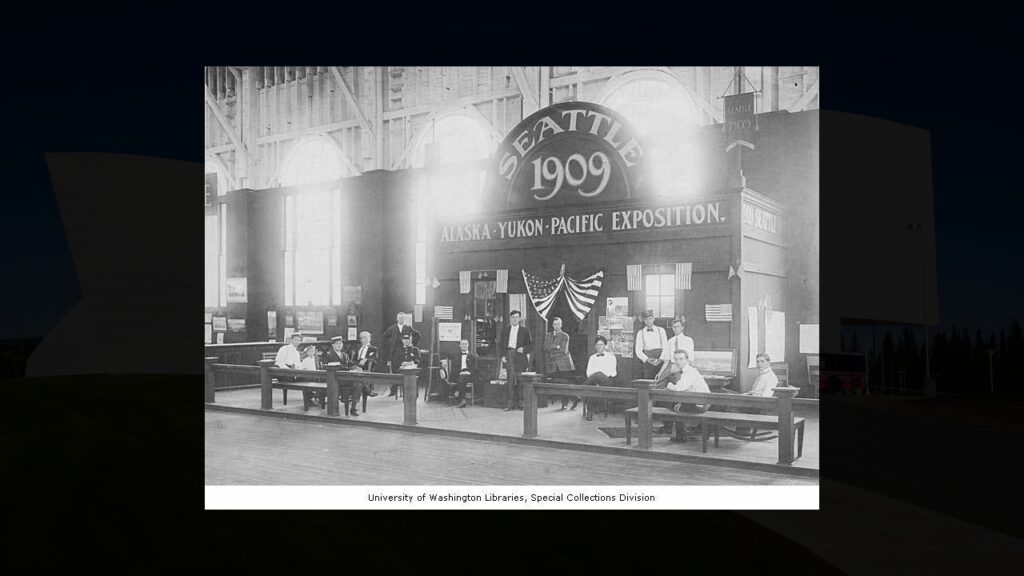
Japan’s Pavilion Proved Seattle’s Pacific Connections
Only Japan and Canada built complete buildings at the fair. The U.S. territories of Hawaii and the Philippines also had exhibits.
Japan’s role made the AYPE truly international and showed teamwork between Pacific Rim countries. Several U.S. states built fancy pavilions showing off their products and achievements.
These connections across the ocean helped back up Seattle’s claim as the gateway city for Pacific trade.
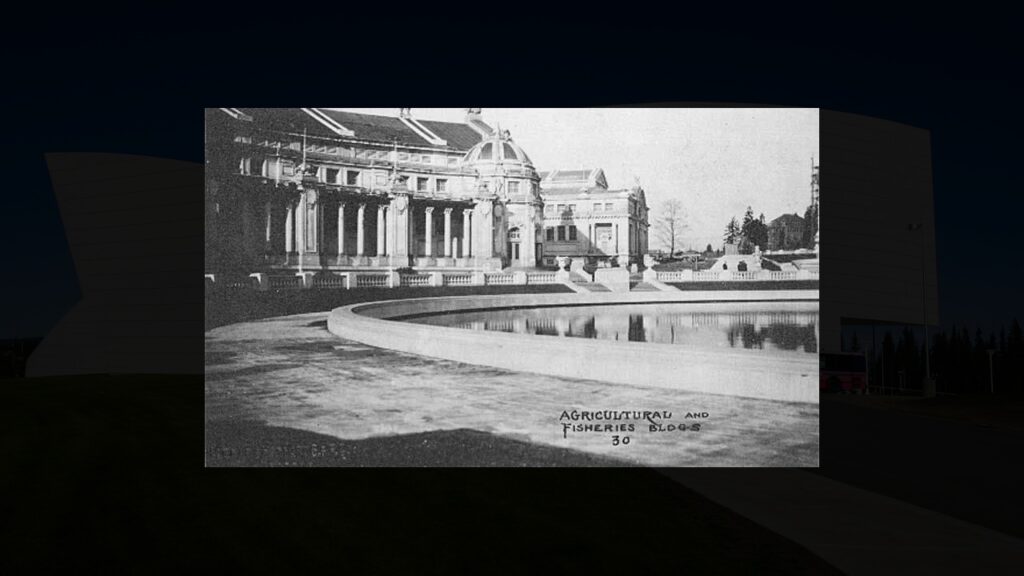
Forest Transformed Into Dazzling Fairgrounds
By opening day in 1909, gardeners had turned the forest into a beautiful park.
They created avenues, paths, cascading water flowing into the Geyser Basin (now called Drumheller Fountain), buildings, and stunning views. Everything stood ready for the June 1, 1909 opening.
Workers built both short-term structures and lasting buildings in the elegant Beaux-Arts style. More than 20,000 electric light bulbs lined the main buildings, creating a magical nighttime display.
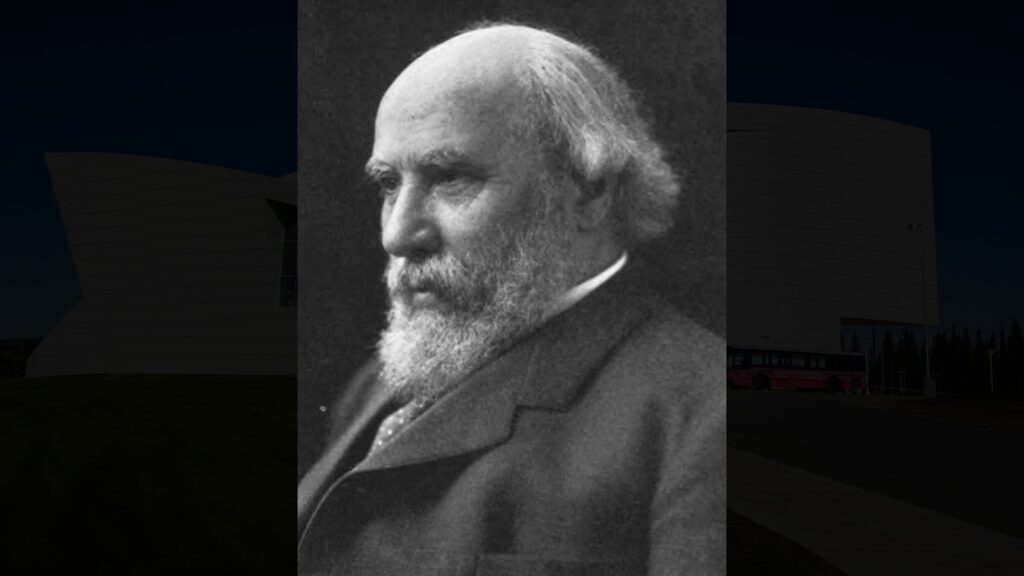
Opening Day Crowds Packed The Grounds
Almost 80,000 people came for opening day on June 1, 1909. Railroad boss James J.
Hill gave the main speech, noting that until recently, most Americans thought the Pacific Northwest sat remote and cut off from the rest of the country.
Hill praised Northwesterners for their forward-thinking spirit and called the exposition “The Fair that Faces Forward.
” Fair officials felt surprised when nobody reported pickpockets or robberies despite the huge crowds.
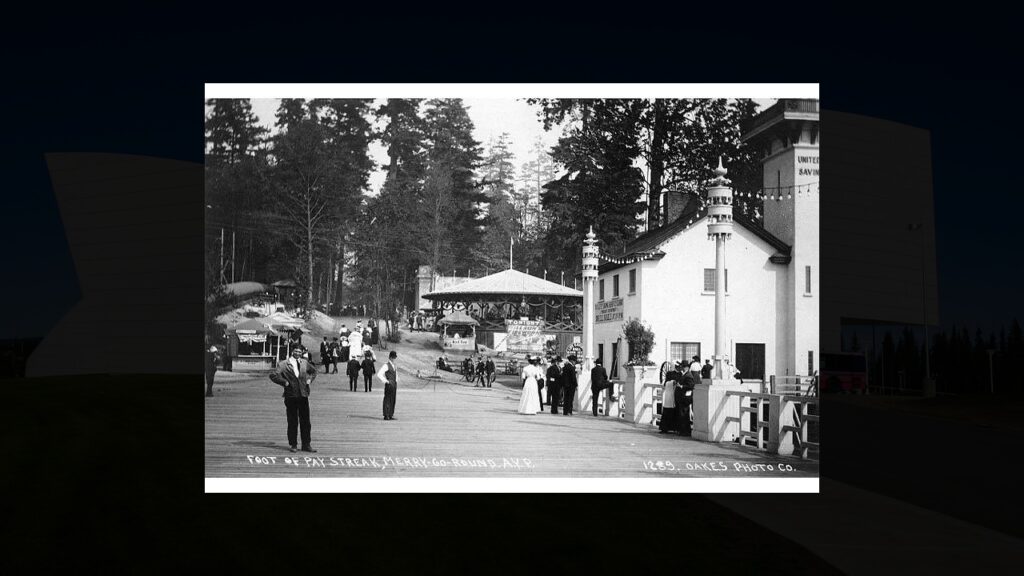
Pay Streak Offered Fun For Every Visitor
The Pay Streak was Seattle’s version of Chicago’s famous Midway, packed with games and shows.
It mixed serious exhibits like Baby Incubators and the California Indian Museum with exotic displays like Streets of Cairo and the Igorrotes tribal people. Carnival attractions included Albert, the Talking Horse.
For extra fees, visitors enjoyed rides, educational exhibits, souvenirs, and snacks. The Pay Streak mixed learning with fun to appeal to all types of fairgoers.
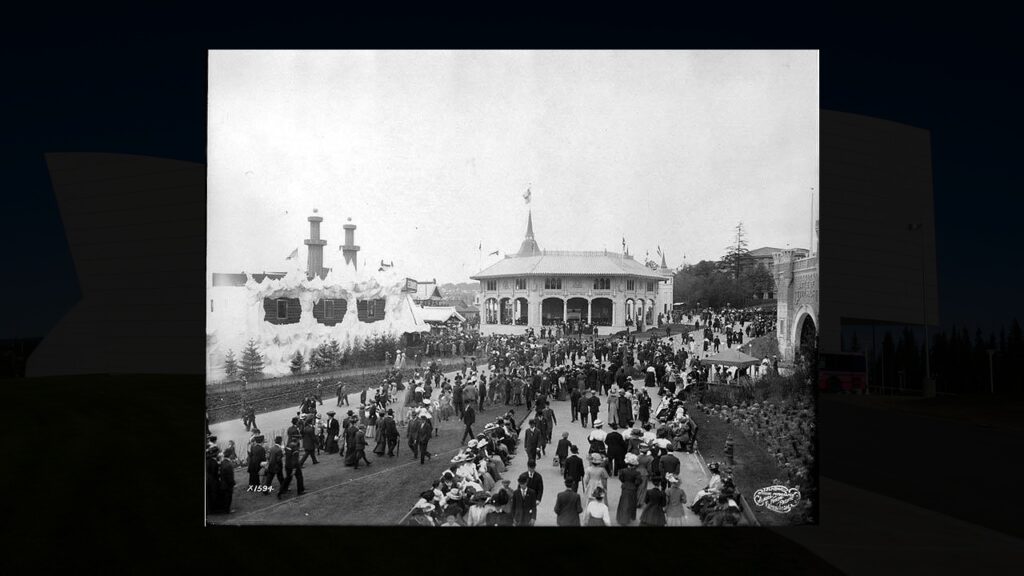
Summer Crowds Broke All Records
Between June 1 and October 16, 1909, more than three million people visited the exposition.
The fair held special themed days for different communities, jobs, and nationalities to keep attendance strong throughout the summer. President William Howard Taft spoke to a huge crowd on September 30, 1909.
Visitors arrived on special trains and steamships from across America and around the world. The steady stream of tourists kept Seattle hotels, restaurants, and shops busy throughout the summer months.
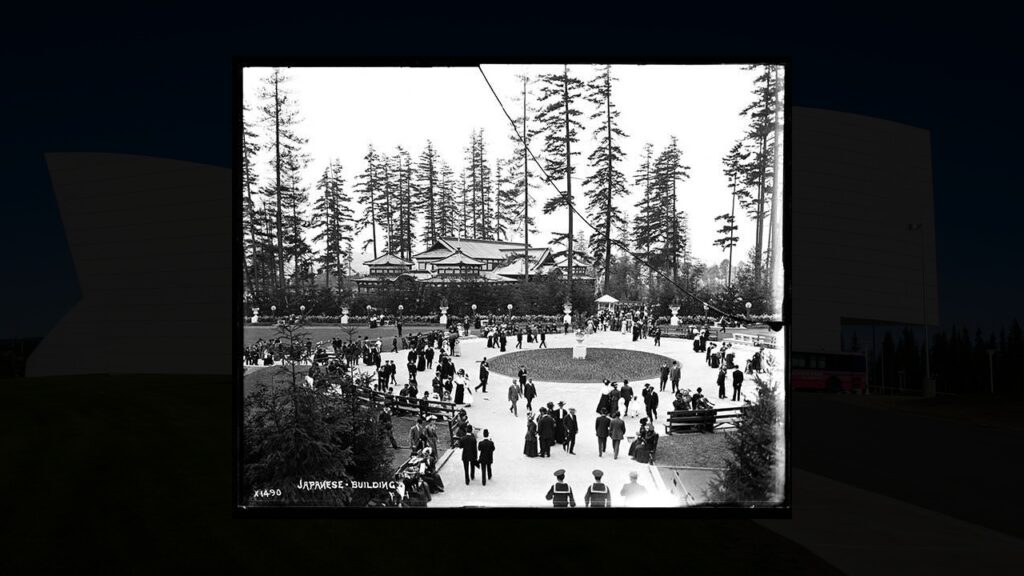
Seattle’s Fair Made History With Black Ink
The Alaska-Yukon-Pacific Exposition became the first World’s Fair ever to make a profit. Over 80,000 people came on opening day, and by the time the gates closed in October, more than 3.7 million visitors had paid to enter.
The fair left a lasting mark on the University of Washington campus, creating the framework that still shapes it today.
The beautiful Rainier Vista and Drumheller Fountain remain as visible reminders of the 1909 exposition.
The Olmsted Brothers’ landscaping plan influenced all later designs for the campus, creating a legacy that students and visitors still enjoy more than a century later.
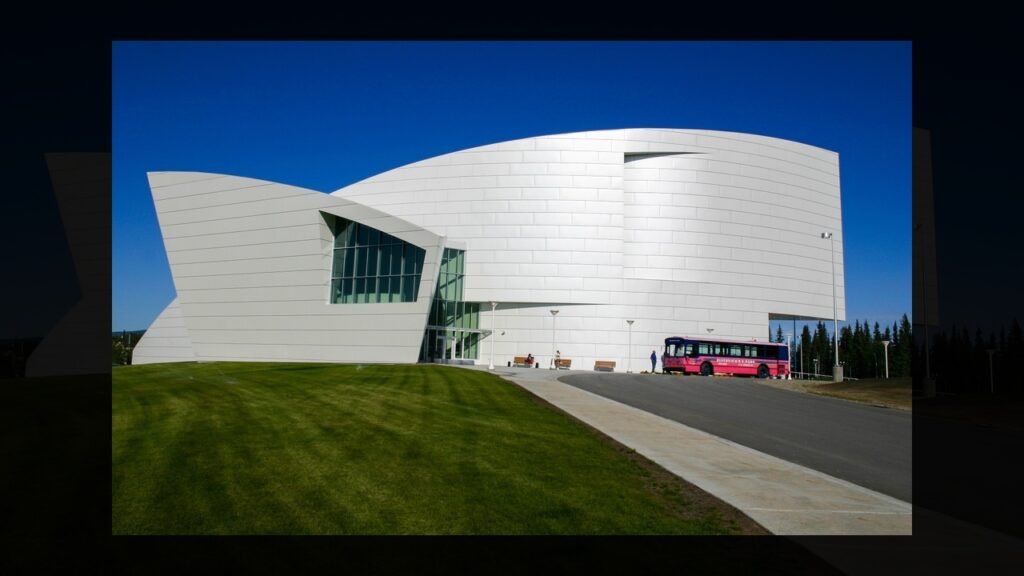
Visiting Alaska Museum of the North, Fairbanks
The Museum of the North at 1962 Yukon Drive on UAF Campus connects you to Alaska’s gold rush history that helped fuel the 1909 Alaska-Yukon-Pacific Exposition in Seattle. General admission costs $20 with discounts available.
Summer hours are 9 AM – 7 PM, winter 9 AM – 5:30 PM.
Check out the Gallery of Alaska’s gold rush exhibits, browse 2,000 years of Alaska art in Rose Berry Gallery, and experience the unique sound installation.
This article was created with AI assistance and human editing.
Read more from this brand:
John Ghost is a professional writer and SEO director. He graduated from Arizona State University with a BA in English (Writing, Rhetorics, and Literacies). As he prepares for graduate school to become an English professor, he writes weird fiction, plays his guitars, and enjoys spending time with his wife and daughters. He lives in the Valley of the Sun. Learn more about John on Muck Rack.


The forgotten Alaska connection to Seattle’s groundbreaking 3.7 million visitor World’s Fair

The moment America officially fractured in two is remembered at this Alabama star

Meet the blind teacher who defied politicians and built West Virginia’s first disability school in Romney

Why did it take 17 years and one stubborn Ohioan to build this WWII memorial?

Arkansas’s DeGray Lake preserves memories a French-Caddo friendship that lasted generations

12 Reasons Why You Should Never Ever Move to Florida

Best national parks for a quiet September visit

In 1907, Congress forced Roosevelt to put God back on U.S. coins. Here’s why.

The radioactive secret White Sands kept from New Mexicans for 30 years

America’s most famous railroad photo erased 12,000 Chinese workers from history
Trending Posts
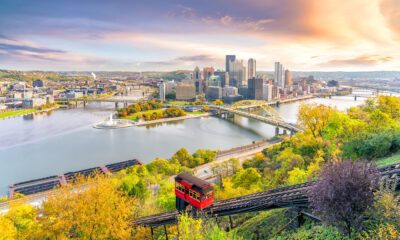
 Pennsylvania3 days ago
Pennsylvania3 days agoHere Are 12 Things People from Pennsylvania Do That Seem Insane To Everyone Else
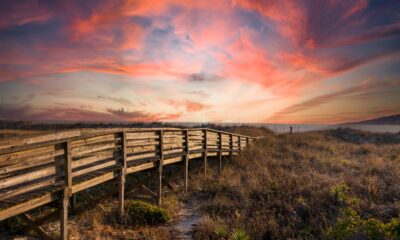
 North Carolina4 days ago
North Carolina4 days agoHere Are 12 Things People from North Carolina Do That Seem Insane To Everyone Else
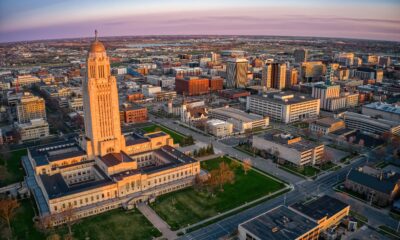
 Nebraska6 days ago
Nebraska6 days agoHere Are 12 Things People from Nebraska Do That Seem Insane To Everyone Else
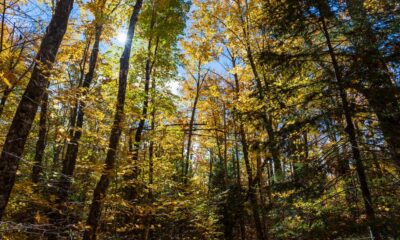
 Maine5 days ago
Maine5 days agoThe ruins of a town that time forgot are resting in this Maine state park
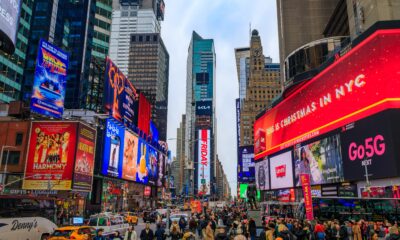
 New York4 days ago
New York4 days agoHere Are 12 Things People from New York Do That Seem Insane To Everyone Else
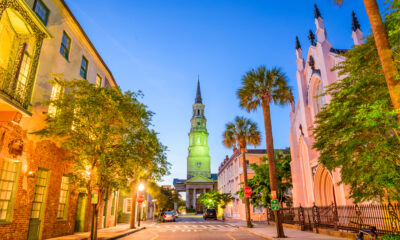
 South Carolina2 days ago
South Carolina2 days agoHere Are 12 Things People from South Carolina Do That Seem Insane To Everyone Else
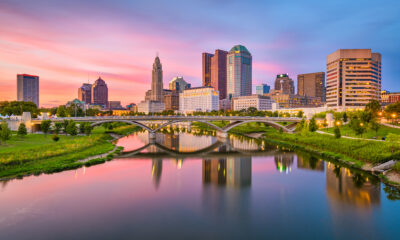
 Ohio4 days ago
Ohio4 days agoHere Are 12 Things People from Ohio Do That Seem Insane To Everyone Else
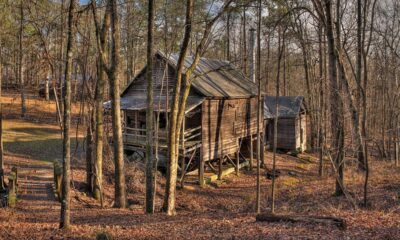
 Georgia5 days ago
Georgia5 days agoThis plantation’s slave quarters tell Georgia’s slowest freedom story
